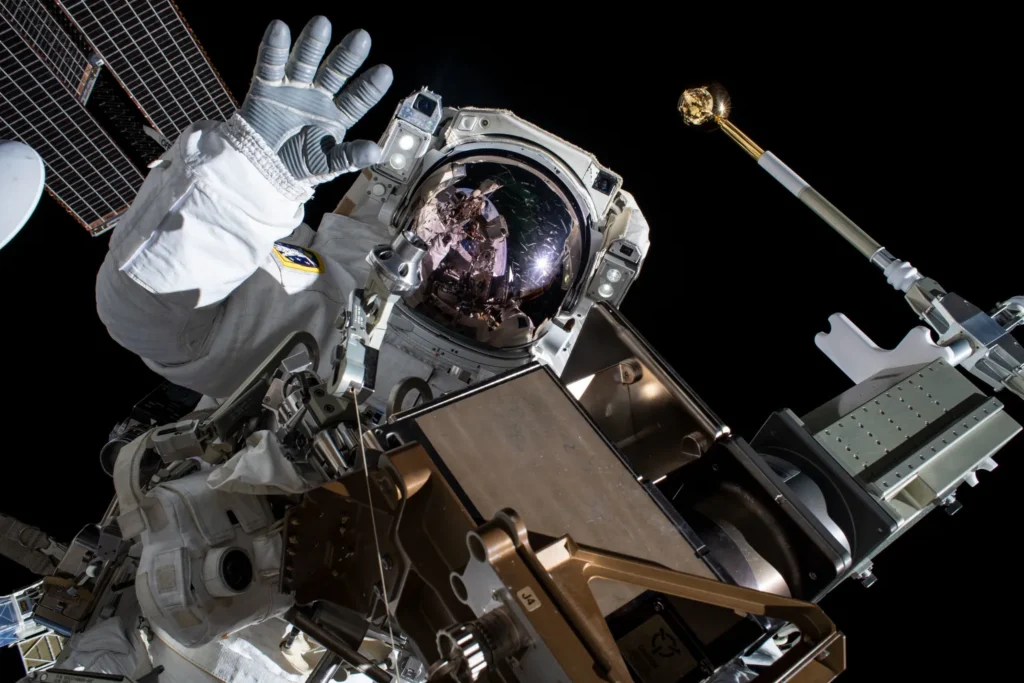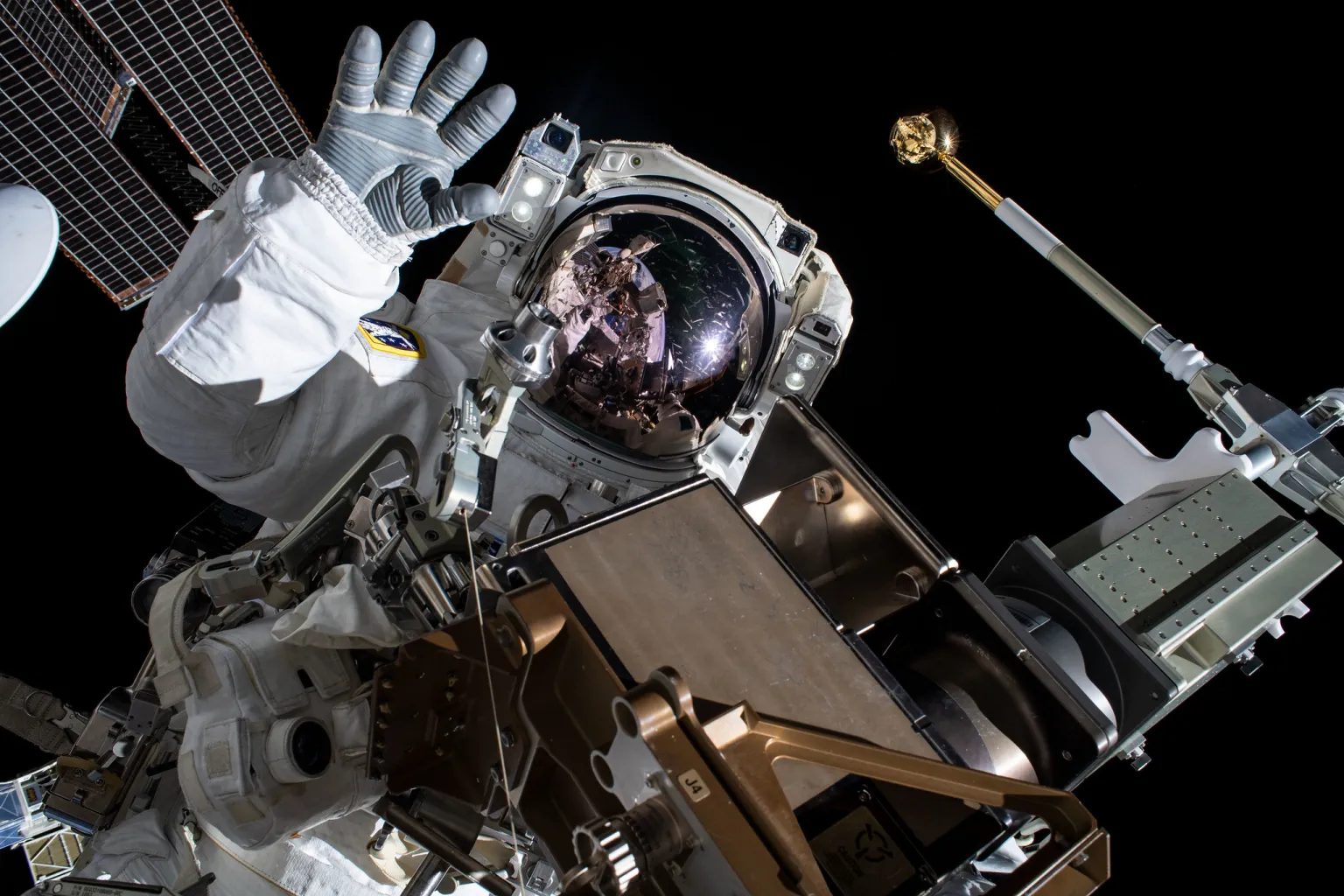NASA spacewalks, ISS repairs, International Space Station, NASA news conference, space exploration, Tracy C. Dyson, Matt Dominick, spacewalk 90, spacewalk 91, spacewalk 92, ISS upgrades, space station maintenance
Discover the details of NASA’s upcoming spacewalks aimed at critical repairs and upgrades on the International Space Station. Learn about the tasks, participating astronauts, and how to watch the live coverage of these exciting missions. Stay updated with NASA’s continuous efforts to enhance space exploration and research.

NASA is gearing up for an exciting series of three spacewalks in June 2024, aimed at conducting critical repairs and upgrades aboard the International Space Station (ISS). These spacewalks are part of NASA’s ongoing efforts to maintain and enhance the functionality of the space station, ensuring it remains a cutting-edge platform for scientific research and technological advancement. To provide more details about these upcoming missions, NASA will hold a news conference at 4 p.m. EDT on Tuesday, June 11. This conference will be broadcast live on NASA+, NASA Television, the NASA app, YouTube, and the agency’s website.
Participants in the News Conference
Several key figures from NASA will participate in the news conference to discuss the objectives and logistics of the upcoming spacewalks. These participants include:
- Dina Contella, Deputy Program Manager, International Space Station
- Rebecca Wingfield, Flight Director for Spacewalk 90
- Nicole McElroy, Flight Director for Spacewalk 91
- Sandy Fletcher, Spacewalk Officer for Spacewalk 90
- Faruq Sabur, Spacewalk Officer for Spacewalks 91 and 92
The presence of these experienced professionals underscores the importance of these spacewalks and the meticulous planning involved.
Media Participation
U.S. media interested in attending the news conference in person must contact the Johnson Space Center newsroom by 4 p.m. on Monday, June 10. They can do so by calling 281-483-5111 or emailing jsccommu@mail.nasa.gov. To participate in the Q&A session, media representatives must dial in no later than 15 minutes before the start of the news conference. Additionally, questions can be submitted on social media using the hashtag #AskNASA.
The First Spacewalk: Focus on Repairs and Microbial Research
The first spacewalk, designated U.S. Spacewalk 90, will feature NASA astronauts Tracy C. Dyson and Matt Dominick. Scheduled to exit the ISS’s Quest airlock, their primary task will be the removal of a faulty electronics box, known as the radio frequency group, from a communications antenna on the starboard truss. This component is vital for the space station’s communication capabilities, and its replacement will ensure continued operational efficiency.
In addition to this repair, Dyson and Dominick will collect samples from the exterior of the ISS to study the survival and reproduction of microorganisms in space. This research is crucial for understanding how life can persist in the harsh conditions of outer space and has implications for long-term space travel and habitation.
Dyson, serving as spacewalk crew member 1, will wear a suit with red stripes, while Dominick, as crew member 2, will wear an unmarked suit. This spacewalk will be Dyson’s fourth and Dominick’s first, marking a significant milestone in his astronaut career.
The Second Spacewalk: Enhancing Visual and Experimental Capabilities
The second spacewalk will focus on upgrading the ISS’s visual and experimental apparatus. Astronauts will remove and replace the external high-definition camera located at camera port nine. This camera plays a critical role in providing external views of the space station, which are essential for both scientific observations and operational monitoring.
Additionally, the crew will conduct a cable connection fit check for the Alpha Magnetic Spectrometer (AMS), a particle physics experiment mounted on the exterior of the ISS. The AMS is designed to detect and analyze cosmic rays, contributing to our understanding of dark matter and other fundamental questions in physics. If time permits, the astronauts will also begin collecting microorganism samples, a task that underscores the multi-faceted nature of these spacewalks.
The Third Spacewalk: Upgrading Orientation Systems and Preparing for Future Installations
The third and final spacewalk in this series will involve the removal and replacement of a rate gyro assembly. This assembly provides crucial data on the orientation of the ISS, helping to maintain its stability and alignment in orbit. Ensuring the proper functioning of this system is vital for the safety and efficiency of the space station.
Following this task, the astronauts will attach a support bracket, known as a modification kit, in preparation for the future installation of the next International Space Station Roll-Out Solar Array (iROSA) on the 2A power channel on the port truss. These solar arrays are part of NASA’s efforts to enhance the ISS’s power generation capabilities, enabling it to support a broader range of scientific experiments and technological demonstrations.
The Importance of Spacewalks for ISS Maintenance and Upgrades
Spacewalks, also known as extravehicular activities (EVAs), are critical for the maintenance and enhancement of the ISS. They allow astronauts to perform tasks that are impossible to accomplish from within the space station, such as repairing external equipment, installing new components, and conducting scientific research on the outer surfaces of the ISS.
The upcoming series of spacewalks highlights the ongoing efforts to keep the ISS operational and up-to-date. Each of these spacewalks involves meticulous planning and coordination among various NASA departments and international partners, demonstrating the collaborative nature of space exploration.
Live Coverage and Public Engagement
NASA’s commitment to transparency and public engagement is evident in its comprehensive coverage of these spacewalks. By broadcasting the news conference and the spacewalks themselves on multiple platforms, NASA ensures that people around the world can follow these exciting missions in real-time. This live coverage not only showcases the technical prowess of NASA and its astronauts but also inspires future generations to pursue careers in science, technology, engineering, and mathematics (STEM).
Conclusion
The upcoming spacewalks for station repairs and upgrades represent another significant chapter in the ongoing story of the International Space Station. As NASA astronauts Tracy C. Dyson and Matt Dominick prepare to venture outside the ISS, their work will contribute to the continued success and longevity of this remarkable orbiting laboratory. Through these missions, NASA continues to push the boundaries of human capability and expand our understanding of life in space. By engaging the public through live coverage and interactive platforms, NASA fosters a sense of global participation in these extraordinary endeavors, inspiring curiosity and innovation for years to come.
Read More-
